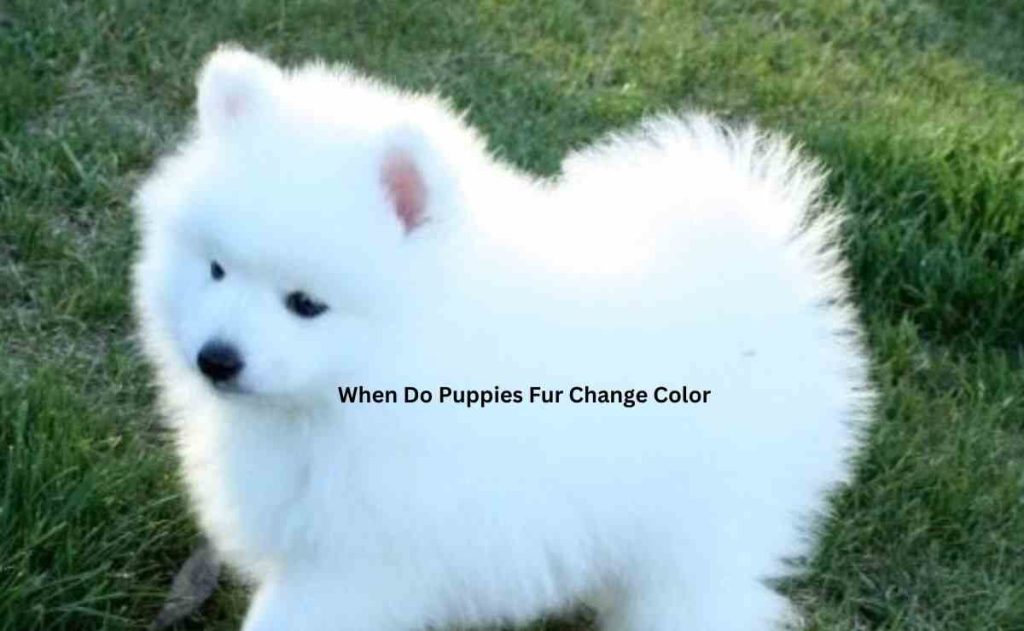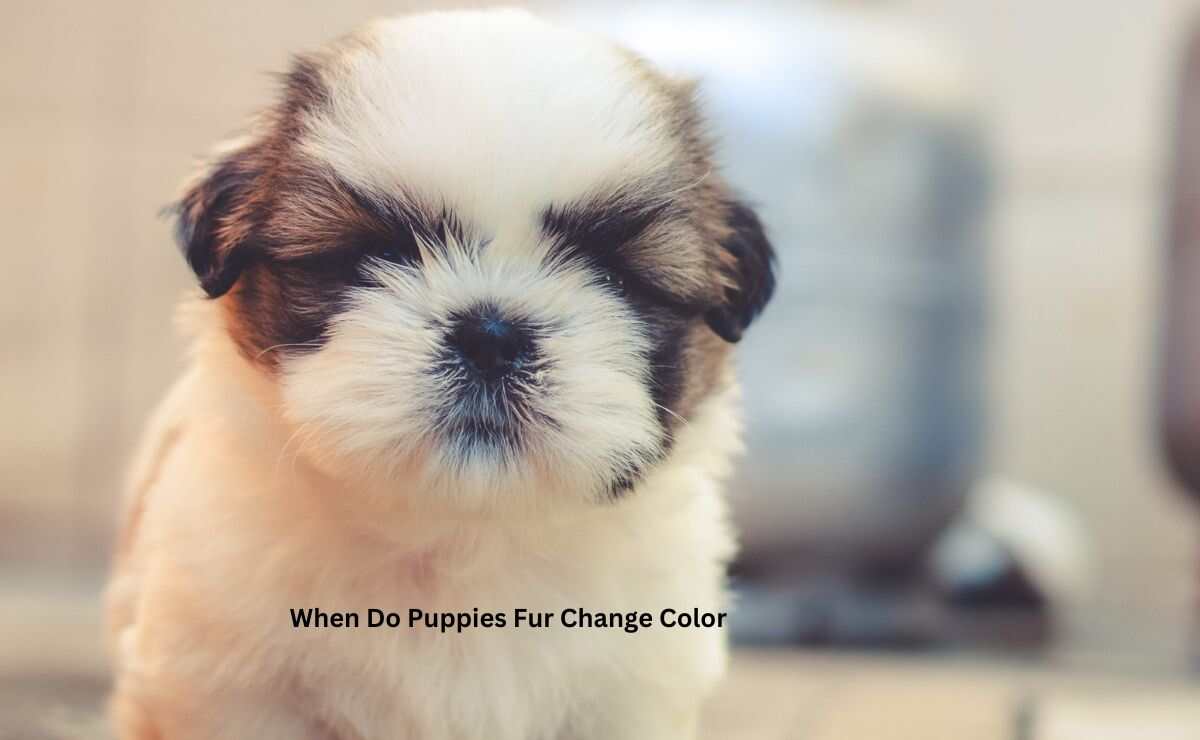Ahhh puppies! How many of us have lost our minds every time we saw a cute little ball of fluff? They are adorable, full of joy and extremely vocal, and dare I say crazy ( at times).
But do you know when puppy fur changes color? If not then don’t you worry because in this article I will be discussing From all Stages of Development of a Puppy to When Do Puppies Fur Change Color and everything in between.
So if that sounds interesting to you then read the entire article. But before we begin let’s first learn
When Do Puppies Fur Change Color

Before starting the in depth discussion of the main topic, we need to know some basic information about the puppies. Classification of puppy is vital and their stages of development also effect on the color change.
What Age Classifies as a Puppy?
The exact age range of a puppy varies depending on the breed, but puppies are generally considered to be between 6 weeks and 1 year old.
Puppies go through a lot of physical and behavioral changes during this time as they grow and mature into adult dogs.
Early Stages of Development
As soon as the puppy comes out of its mother’s womb. It is pretty much out of commission for the first 1-3 weeks. This is because they have yet to open their eyes and perk up their ears. They look like a bunch of bean babies that only stay closer to their mothers.
As the mother will nurse them the crucial stage of development begins. Even though how the dog might turn out is solely dependent on genetics, we cannot look past the fact that if a puppy does not get enough nutrients it will never grow to its full potential.
Puppies need a lot of socialization, training, and veterinary check-ups, to ensure they grow up healthy and happy.
Why and When They Change Colors
This is a very interesting stage of development that most animals in the ecosystem go through. We don’t know exactly why this occurs. But scientists have come up with some possible explanations as to why this happens. And it all has to do with sunlight, hormones, and genetics.
When a puppy’s fur changes color( Lighter or Grey) varies depending on the breed and that individual dog. Some breeds, such as Siberian Husky, American Akita, and Alaska Malamute can have their fur change color as early as 6 weeks old.
Whereas others, such as the Golden Retriever, and German Shepherd may not have their fur change color until the dog is several months old.
It May Become Dangerous
Okay, I am not trying to freak you out. Puppies changing their fur coat is completely normal and natural. Yet it is also important to mention when it is not normal and you should definitely seek the help of a veterinarian.
The first sign to look out, if you know for a fact that it is a breed (e.g Black Labrador) that has only a specific color but the puppies for some reason grew up to be the opposite color. The second sign you should look out for is if the puppies have unusual patterns or spots.
Some puppies may experience excessive shedding when they enter adulthood. But it should only be a matter of concern if there are major empty spots on their body. It can either happen from some type of defect or parasitical invasion.
Dogs of Unchanged Fur Color
This section of the article presents to you every type of dog which will not change in different colors. It is important to make such a distinction because if you find any anomalies you can start acting upon them much earlier, potentially saving the puppy’s life.
- Poodles: Poodles are available in a wide range of colors, including white, black, brown, apricot, and gray. Poodles are known for their curly, non-shedding coat that retains their color throughout their lives, regardless of color.
- Maltese: Maltese dogs are distinguished by their long, silky, white fur that does not fade with age.
- Bichon Frise: Bichon Frises are small, fluffy dogs with curly, non-shedding white fur. They keep their bright white coat for the rest of their lives.
Ways to Tell The Color Changes
Predicting a puppy’s color can be difficult because coat color and pattern are influenced by many genetic factors. Knowing the colors of the puppy’s parents and grandparents is the best way to make a spot-on guess, as this can give you an idea of the probable color combinations that could appear in their babies.
Another consideration is the puppy’s breed, as different breeds have different patterns of coat and color inheritance. Some breeds, for instance, are more likely to have one solid color, whereas others may have a wider range of patterns and colors.
If the parents have similar coat colors, the puppies are more likely to have the same color. If the parents are different colors, the puppies may get a combination of both colors, or they may be a completely different color.
Black Merle vs Black Bridle
Dogs can have two different coat patterns: black merle and black brindle. To make it much easier for everyone to understand. Let’s look at the key differences.
| Black Merle | Black Bridle |
| The base color of a Black Merle dog is black, with random splotches of lighter color that can range from white to gray to silver. | A Black Brindle dog, on the other hand, has a black base color with stripes or streaks of a lighter color that can range from gray to brown to tan. |
| This pattern is caused by a genetic mutation that alters the pigment distribution in the dog’s coat. Merle is more common in Australian Shepherds, Border Collies, and Dachshunds. | A genetic variation in the distribution of melanin in the dog’s hair causes this pattern. Brindle is more prevalent in breeds such as Boxers, Mastiffs, and Whippets. |
While these patterns can be striking and appealing, they do not necessarily indicate anything about a dog’s behavior or health. When selecting a pet, consider all factors, including breed health, temperament, and characteristics, rather than just coat color or pattern.
Change or not We Love ’em All
It goes without saying that whatever color the puppy ends up being, it is not detrimental to its health if it is properly nourished, cared and stimulated. Dogs especially puppies require an insane amount of energy from their caregivers.
Of course, different breeds can act differently but innately all of them need an active caregiver, that will play with them and also give them a high-quality life.
Final Words
I hope you learned a thing or two about puppies and When Do Puppies Fur Change Color.
If you are on the lookout to get a pup, please adopt them from your local shelter or rescue them if possible. And If you already have one, take very good care of them, as they are little furry-angel babies that make our bad days a little bit better.
Also Read
